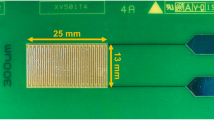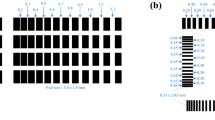Abstract
In the reflow process, the thermal decomposition of flux with different thermal stability will lead to different residues on printed circuit board assemblies, which will affect the reliability of solder joints. As an essential part of the flux, the solvent is one of the main factors affecting the thermal stability of flux. This paper systematically investigated the effect of solvents on the thermal stability of flux and the corresponding paste. Thermogravimetric analysis and differential scanning calorimetry (TGA–DSC) curves of various solvents showed that the end temperature of weight loss of each solvent is significantly 80–90 °C lower than their boiling points. By mixing solvents and adding other additives, the thermal stability of mixed solvents and flux enhanced due to Raoult’s law. Thus, TGA–DSC curves provided a clear indicator than the boiling point to guide the selection of solvents in the development of solder paste formulation. Also, TGA–DSC curves of flux showed two distinct thermal decomposition stages: solvent volatilization dominated weight loss and then thermal decomposition of rosin and other additives dominated weight loss. In addition, the real-time in situ hot plate soldering experiment and slump test of solder pastes showed that different thermal stability solvents in flux affect the reflow behaviors of solder paste, which is mainly reflected in collapse performance.












Similar content being viewed by others
Data availability
The data used to support the findings of this study are available from the corresponding author upon request.
References
Lau JH, Lee N-C (2020) Assembly and reliability of lead-free solder joints. Springer, Singapore. https://doi.org/10.1007/978-981-15-3920-6
Conseil H, Verdingovas V, Jellesen MS, Ambat R (2016) Decomposition of no-clean solder flux systems and their effects on the corrosion reliability of electronics. J Mater Sci Mater Electron 27:23. https://doi.org/10.1007/s10854-015-3712-x
Bath J (2020) Lead-free soldering process development and reliability. Wiley, Hoboken. https://doi.org/10.1002/9781119482093
Lee N-C (2010) Lead-free flux technology and influence on cleaning. In: 11th electronics packaging technology conference, Singapore. https://doi.org/10.1109/EPTC.2009.5416571
Mario MH, Arenas F, Acoff VL (2006) Effect of flux on the wetting characteristics of SnAg, SnCu, SnAgBi, and SnAgCu lead-free solders on copper substrates. J Electron Mater 35:1530. https://doi.org/10.1007/s11664-006-0144-7
Wakeel S, Haseeb ASMA, Afifi MA, Bingol S, Hoon KL (2021) Constituents and performance of no-clean flux for electronic solder. Microelectron Reliab. https://doi.org/10.1016/j.microrel.2021.114177
Tang M, Sheng Gan G, Luo H, De Gan S, Meng Wang Q, Du Hua C (2014) Effects of organic acids on wettability of Sn-0.3Ag0.7Cu lead-free solder. Appl Mech Mater 543–547:3843. https://doi.org/10.4028/www.scientific.net/AMM.543-547.3843
Shi Y, Wei X, Tolla B (2015) The role of organic amines in soldering materials. In: IPC APEX EXPO conference proceedings, San Diego, USA.
Li F, Piotrowska K, Jellesen MS, Ambat R (2021) Alkanolamines as activators in no-clean flux systems: investigation of humidity robustness and solderability. J Mater Sci Mater Electron 32:4961. https://doi.org/10.1007/s10854-020-05235-0
Ismail N, Ismail R, Jalar A, Omar G, Salleh EM, Kamil N, Rahman IA (2018) Comparative study of interfacial interaction between aromatic and aliphatic functional group in solder wettability. J Mater Sci: Mater Electron 29:12910. https://doi.org/10.1007/s10854-018-9410-8
Ekere NN, Mallik S, Durairaj R, Marks AE (2008) An investigation into the rheological properties of different lead-free solder pastes for surface mount applications. Solder Surf Mount Technol 20:3. https://doi.org/10.1108/09540910810871511
Xu X, Wang Y, Zhou J, Xue F (2015) Investigation of rheology behavior of lead-free solder paste. In: 16th international conference on electronic packaging technology, Changsha, China. https://doi.org/10.1109/ICEPT.2015.7236633
Li S, Xu Q, Hao J, Zhou J, Xue F (2019) Effect of solvent on rheological properties of Sn–0.3Ag–0.7Cu solder paste for jet printing. Mater Res Express. https://doi.org/10.1088/2053-1591/ab23ae
Xu X, Zhang C, Zhou J, Xue F, (2015) The effect of flux components on the slump-in-heating resistance of Sn-30Ag-05Cu solder paste. In: 16th International conference on electronic packaging technology, Changsha, China. https://doi.org/10.1109/ICEPT.2015.7236653
Hosking FM, Yost FG, Frear DR (1993) The mechanics of solder alloy wetting and spreading. Springer, New York. https://doi.org/10.1007/978-1-4684-1440-0_8
Gao L, Xue S, Liang Z et al (2010) Effect of alloying elements on properties and microstructures of SnAgCu solders. Microelectron Eng 87:2025. https://doi.org/10.1016/j.mee.2010.04.007
Davis Wilder HL, Bancroft D (1929) Raoult’s Law. J Phys Chem 33:361. https://doi.org/10.1021/j150297a004
Fisher CH (1998) Correlating viscosity with temperature and other properties. J Am Oil Chem Soc 75:1229. https://doi.org/10.1007/s11746-998-0167-8
Acknowledgements
This study was funded by the Yunnan Science and Technology Major Project (Grant Number 202002AB080001) and the Research and Development Funding of Yunnan Tin Group (Holding) Co, Ltd. The authors would like to thank Qing Li from Yunnan Tin Group (Holding) Co. Ltd for assistance in TGA-DSC tests.
Author information
Authors and Affiliations
Contributions
Jiajun Wang contributed to experiment, original draft, data curation, formal analysis, and writing—original draft. Jubo Peng contributed to supervision and writing—review. Shanshan Cai contributed to writing—review and editing, and discussion. Xiaojing Wang contributed to writing—review and editing, discussion, and conceptualization.
Corresponding authors
Ethics declarations
Conflict of interest
The authors declare that they have no known competing financial interests or personal relationships that could have appeared to influence the work reported in this paper.
Ethical approval
Experiments in this paper do not involve in any vivo testing on animal subjects, human subjects, or human tissue.
Additional information
Handling Editor: Catalin Croitoru.
Publisher's Note
Springer Nature remains neutral with regard to jurisdictional claims in published maps and institutional affiliations.
Rights and permissions
Springer Nature or its licensor (e.g. a society or other partner) holds exclusive rights to this article under a publishing agreement with the author(s) or other rightsholder(s); author self-archiving of the accepted manuscript version of this article is solely governed by the terms of such publishing agreement and applicable law.
About this article
Cite this article
Wang, J., Peng, J., Cai, S. et al. The effect of solvents on thermal stability of solder pastes in reflow process. J Mater Sci 58, 2347–2359 (2023). https://doi.org/10.1007/s10853-023-08162-7
Received:
Accepted:
Published:
Issue Date:
DOI: https://doi.org/10.1007/s10853-023-08162-7




